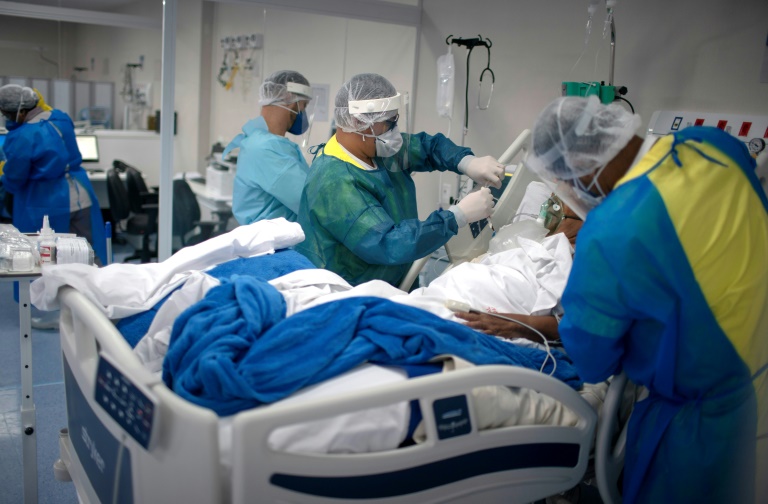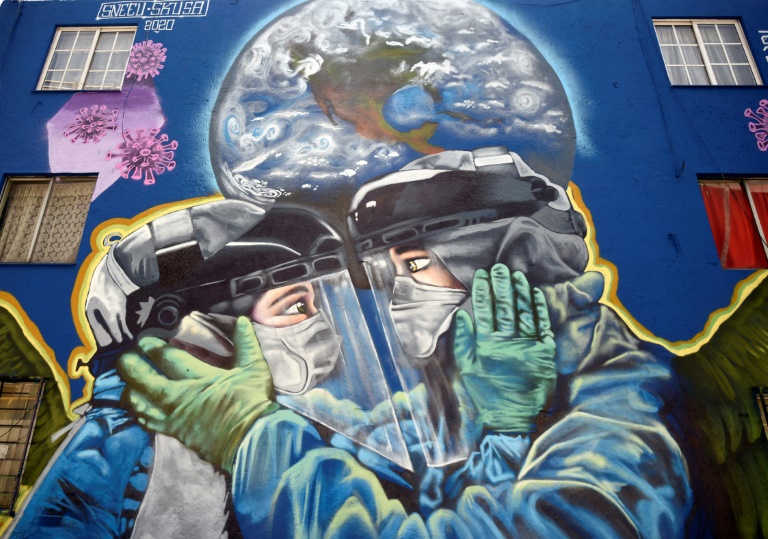Editor's note: This is the 74th article in the COVID-19 Global Roundup series. Here is the previous one.
04:50

Latin America's coronavirus crisis reached a grim new milestone on Wednesday, with more than 70,000 deaths in the region, putting growing pressure on an already stretched healthcare system.
Brazil, the largest economy in the region, remains Latin America's most affected country, with 39,680 deaths, behind only the U.S. and Britain. In the region's second-biggest country, Mexico, a new daily record of 4,883 confirmed cases was reported by the Health Ministry, along with 708 additional fatalities.
As Latin America has become the new hotspot for the pandemic, hospitals in the region are struggling to cope with the influx of sick and dying, and nurses and medics have been hit particularly hard.
According to the International Council of Nurses, Brazil accounts for nearly one-third of the 600 deaths among nurses and other health professionals, around 18,000 nurses in Brazil have been infected with COVID-19, and at least 181 have died, among the highest numbers in the world.
Hans Bossan, a nurse in Rio de Janeiro, works three jobs at two different hospitals and a mobile emergency unit to provide for his wife and two-year-old daughter. Double and triple shifts like his are not unusual in Brazil, where the average salary for nurses, nursing assistants and health care technicians is just 3,000 reals (600 U.S. dollars) a month for a 30- to 44-hour workweek.
The pandemic, which has claimed an alarming number of his colleagues' lives, has highlighted the plight of nurses in Brazil, who often face bad working conditions and are now getting sick and dying from COVID-19 at a startling rate.
"Nursing was always an overworked profession, and this pandemic has just made things worse," said Bossan, 41.
"We're highly undervalued. Nurses deal directly with patients, with the virus, we're on the front lines of the war," he told AFP at his home in a poor neighborhood on the eastern outskirts of Rio de Janeiro.

An ICU in Marica, Rio de Janeiro state, Brazil, June 6, 2020. /AFP
An ICU in Marica, Rio de Janeiro state, Brazil, June 6, 2020. /AFP
Last month, nurses protested in the capital, Brasilia, against the poor working conditions they blame for contributing to their colleagues' deaths. When the initial flood of cases hit Brazil's hospitals, health care workers faced severe shortages of protective equipment and inadequate training on dealing with the new virus.
Although the situation has improved with time, "we're still getting lots of complaints about lack of protective gear or low-quality equipment," said Nadia Mattos, vice president of Brazil's Federal Nursing Council.
Critics of Brazil's populist President Jair Bolsonaro said the epidemic has been worsened by a haphazard response that has seen the president repeatedly downplay the severity of the disease.
He has agitated against the lockdowns that scientists say are necessary to tamp down the infection, insisting the economic cost is too high.
On Wednesday, and with infection rates still soaring, the economic capital Sao Paulo began reopening shops. Malls will reopen in a slew of other cities on Thursday, the day before Brazilians celebrate Valentine's Day.
In Mexico, the government's data suggests around one in five confirmed coronavirus cases in the country are health workers, which is much higher than in other hardest-hit countries, like the United States, Italy and China.

One in five confirmed coronavirus cases in Mexico are health workers. /AFP
One in five confirmed coronavirus cases in Mexico are health workers. /AFP
Dr. Daniel Leglisse, a 47-year-old emergency room doctor, died on April 16 of complications from COVID-19. The Los Angeles Times reported that before he passed away, the man had tried everything including leaving shoes outside the door, washing clothes and sleeping in a separate room to protect his family because he was afraid of contracting the disease from the patients at the hospital and passing it to his wife and son.
Leglisse is among about 200 healthcare professionals in Mexico who have died from the virus. So far, the country has reported more than 129,000 COVID-19 cases and over 15,000 deaths.
According to the World Bank, the Mexican government spends little on healthcare – less than three percent of its national output and far less than most countries in the Western Hemisphere. World Bank data shows that by 2017, well before President Lopez Obrador took office, only two countries in Central and South America spent less on health system than Mexico as a share of their economies: Guatemala and Venezuela.
Mexico hasn't reached the maximum point in terms of the confirmed coronavirus cases, according to Deputy Health Minister Hugo Lopez-Gatell. However, the country has begun to push a gradual reopening of the economy launched at the beginning of this month.
In Peru, the health ministry registered more than 200,000 cases, ranking the South American country as the eighth-highest in the world, second-highest in Latin America by number of infections. The death toll rose to 5,903. Chile is the third-highest in Latin America, with 148,456 cases and 2,475 deaths.
(With input from agencies)